The Philosophy of Erotic Visual
Art
, by Rick Garlikov
There seem to me to be at least three different kinds of erotic visual
(pictorial) art, reflecting three different intentions or purposes:
to cause sexual arousal;
to portray or capture some element or aspect of sexuality or sensuousness;
or to express or communicate something in pictorial form about sexuality
or sensuousness, often some insight the artist has about it.
Of course, one work may incorporate all three of these features; a picture
may be arousing, may capture some essential aspect of sex, and may make
some sort of statement about sex. In fact a picture / art may be arousing
because it captures some exciting aspect about sex or sensuality.
Not all Eroticism is Degrading to Women
There are some areas I can immediately eliminate from good erotic art
-- those which portray degradation, humiliation, or treatment of people
as merely objects with no consideration for their feelings, and those
which portray any sort of pain, brutality, or violence in some manner
that tries to extol or equate it, or tries to associate it in some
positive manner, with sexuality.
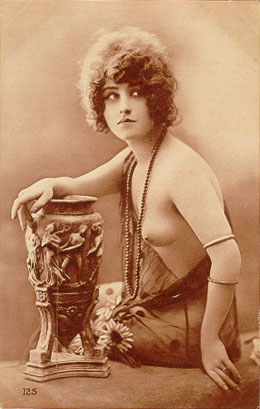
Now some feminists regard all erotic art, by its very nature, as degrading women; but I doubt this is a fair assessment, since (1) some women themselves who have a good self- image enjoy looking at and/or posing for some erotic images, and (2) some men who respect and think very highly of women like to look at some erotic art without therefore thinking any less of the women who pose for it or of women in general. (3) If sex and sensuality are something both men and women can find wonderful and/or can enjoy equally, then I see no reason why art which deals with it should by its nature be one-sided or degrading to one sex.
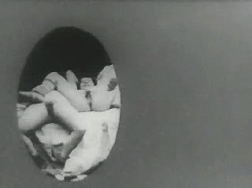
Some artists even seem to consider some of their work as an effort to elevate in the mind the sensuousness of women, or at least as an effort to capture or portray the sensuousness of a particular woman or women in general. And they do this for the same kinds of artistic or communicative (or whatever) reasons that one might try to capture, point out, or express any human quality, emotion, or insight.
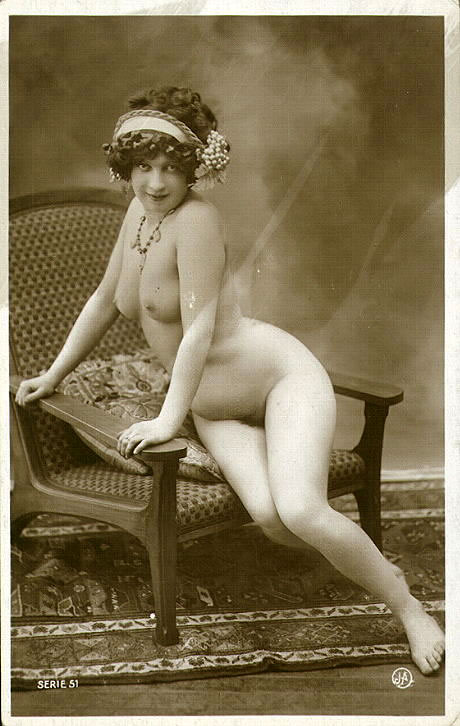
The Art of Eroticism
So I think one element that can contribute to erotic art's being good
is its capturing or portraying some of the things that might make sex
good, such as the joy and/or pleasure it can cause, such as the excitement
and the calm it can bring, such as its sometimes gentleness, such as
its allowing a communion or sharing of spirits or feelings or moods,
such as its art to allow the simultaneous giving and receiving of pleasure,
and any of the vast variety of things there are that make sex sometimes
a wonderful, erotic artistic experience. Since many of these things
are themselves felt experiences or felt impressions, and not visible
characteristics, capturing or portraying them visually can be quite
an art or intellectual accomplishment. And, except for cases of extreme
artistic luck, it requires some sensitive awareness to their occurrence
in the first place.
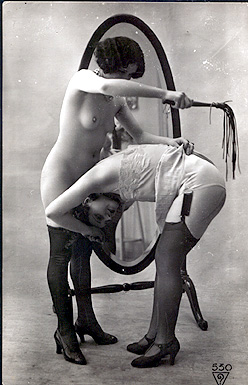
... Visual erotic art is often bad because it either does not capture
any of the better essences of good or interesting sex or it does not
portray them well visually (due to either technical or artistic reasons--i.e.,
bad lighting, bad composition, bad cropping, bad exposure, etc.), or
it overrides good portrayal of these elements by featuring other elements
that spoil or ruin the overall effect, such as pain, violence, humiliation,
apparent one-sided "use" of one of the participants, terrible
consequences for the relationship, or whatever.
See: A Philosophy of Erotic Visual Art, by Rick Garlikov
http://www.garlikov.com/EroPhilo.html
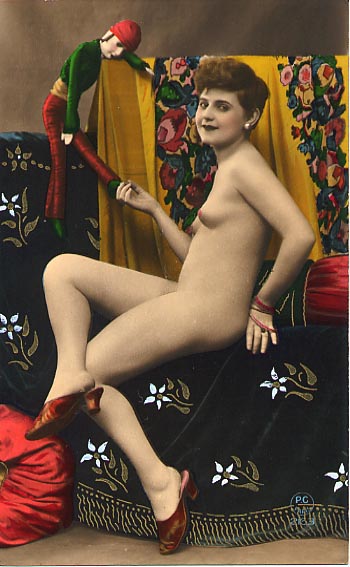
Nude photography did not begin with Playboy.
Until the advent of photographic reproduction in the mid-nineteenth century,
portrayal of the naked body --preferably female-- was the painter's
prerogative. Whereas painting usually veiled sensuality with religious
or mythological connotations, nude photography revealed it directly
and without inhibition. Although classic fine art poses are often copied,
the photographic model's inviting expression or lascivious gesture
addresses the observer much more immediately.
The photographers whose work is represented in this book are Auguste Belloc, Bruno Braquehais, Phillipe Derussy, Louis Jules Duboscq-Soleil, Alexis Gouin, Felix Jacques-Antoine Moulin and Louis-Camille d'Olivier.
A woman you can almost touch, yet who is captured only on paper... The erotically suggestive aura of these pictures has not lost its subtle effect even today.
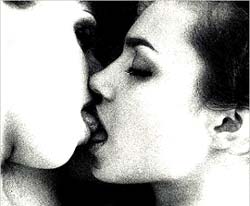
A Brief Introduction to Early Erotic Photography
1839: Louis J.M. Daguerre publicly announces that he has found a method of developing permanent photographic plates. The painter Paul Delaroche declares: "From today, painting is dead!"
This statement turned out to be an exaggeration, but it's obvious that photography dramatically changed how we communicate the world around us. Artists like Delaroche saw it both as a threat to their livelihoods and as an inferior medium that would never capture the nuances of painting. Painting as a whole did survive of course (though most portraitists of the day had to switch to photography or find themselves out of work), but photography eclipsed it quickly in several key realms. Among others - portraiture, journalism, and what we're concerned with here... pictures of naked people.
The first nude 'photographs' were daguerreotypes (named for the aforementioned Daguerre) - an image printed directly onto a polished silver plate coated with silver halide. They had their limitations: each daguerreotype was a one-off image that could not be reproduced and the exposure times could run upwards of 10 minutes, not ideal for human subjects. However, they produced beautiful, haunting pictures that did not fade over time. Many were delicately hand-tinted and colored by the photographers, often formerly painters themselves.
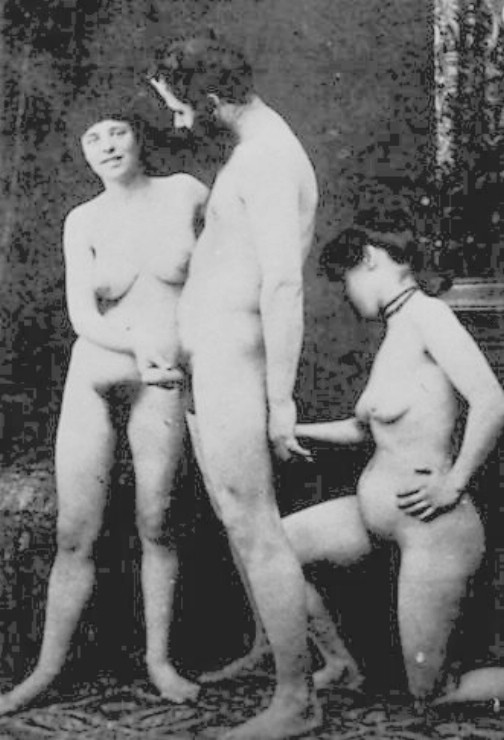
The vast majority of nude daguerreotypes were produced in 1840-1850s France and could cost buyers the modern equivalent of $1000. Most of these were first created as 'nude studies' or 'academies' ostensibly as nude references for painters but really designed for a, uh... wider audience. They were, as author Aaron Scharf has stated, "information for artists and pleasure for voluptuaries".
Keeping in line with artistic conventions, a lot of the early nudes you'll see here contain historical & mythological themes or at least have elements (folding drapery, idyllic woodland scenes, dildos, etc) that were found in the portraits of the day. The idea being to provide a glimmer of respectability (and in those times, legality) to what are essentially erotic prints.
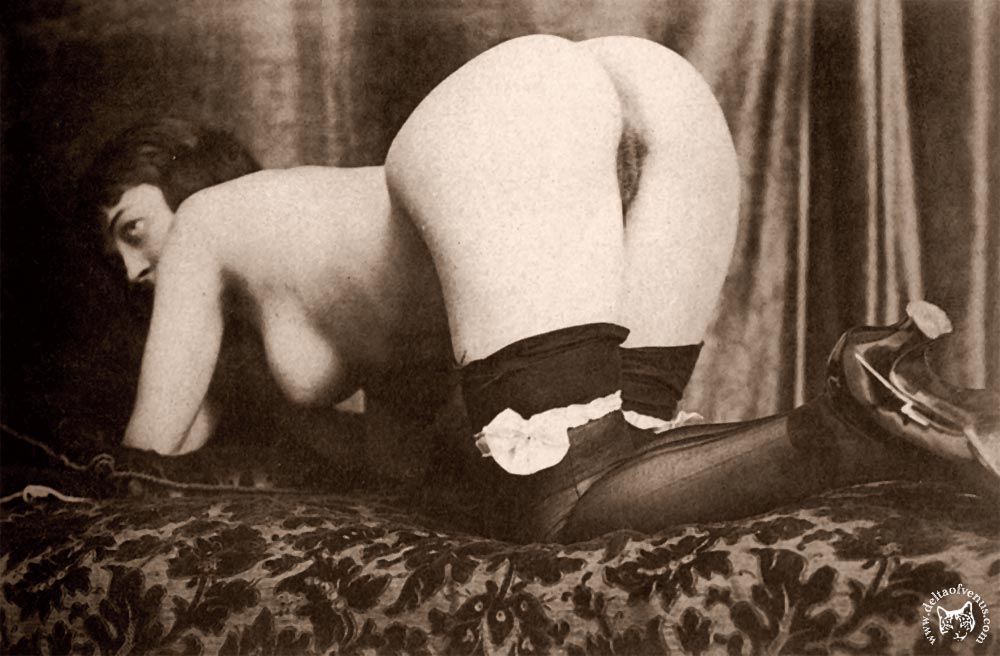
In the 1850s and following decades, improved photo techniques started cropping up rapidly - Henry Talbot's calotype, Fredrick Scott Archer's collodion process, the ambrotype, the tintype, et cetera, each one an improvement over the last. Unlike the single-use daguerreotype, many of these allowed photographers to create multiple positive prints from an original negative. And so the lovely yet difficult and very expensive daguerreotype was phased out. Materials became cheaper and the developing easier, and photographic nudes were able to reach a larger audience.
The academies gained in popularity along with mass-produced saucy postcards (a thriving industry in Paris in the late 1800s, though most were illegal to actually send and thus simply called 'postcards' because of their size). They were available through street vendors, select bookstores, tobacco shops, and other merchants who were off the beaten path and better able to avoid official oversight.
More and more photographers began producing more and more explicitly erotic material, photos that made no pretensions towards 'art' (check out the hardcore sex archives). This trend brought the wrath of the authorities down on many erotic book & photo sellers. Remember, this was the Victorian age in England, and its rigid moral system hung over most of the Western world. Forget about America... almost everything of a sexual nature there, including works now considered masterpieces, was subject to seizure and its possessors open to prosecution. Hence we have few early erotic images by American photographers.
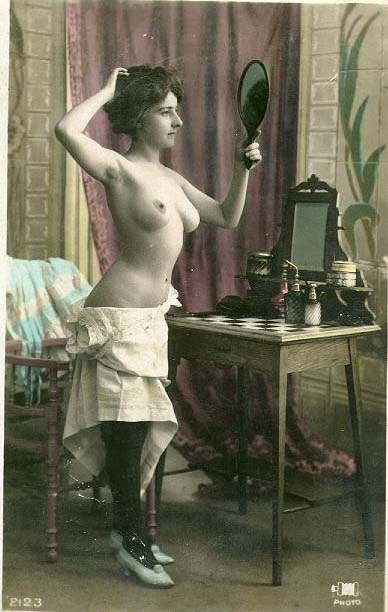
The case was similar, if slightly less severe, in England. Even in France, which has always been comparatively open in its attitudes towards sexual matters, dealers regularly incurred the unwelcome attention of various authorities. In August 1900, gendarmes (French military police) raided shops and studios throughout Paris and confiscated over 80,000 erotic photos. Still, the intrepid erotic photographers weren't fazed by the late-summer crackdown. They simply relocated and made an extra effort to use anonymous backgrounds that wouldn't give away the location of the photo shoot.
And that's kinda how it's been with erotica in western European & American culture thru the ages: a defiant minority produces it, the population at large uses it, and all the while the powers-that-be try to suppress it. The mediums change, but steamy pictures always seem to get someone upset, whether they're done in oil, celluloid, or Polaroid.
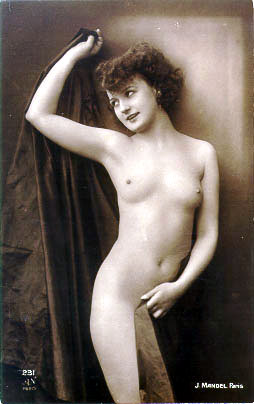
Ahh, delightful hardcore pornography... enjoyed by many though admitted
by fewer, and destined to be perpetually both taboo and enticing for
a Western culture that is simultaneously hypersexualized and rather
uptight on the subject. And at no time was that more true than in mid
19th century Europe and America.
As mentioned previously in the introduction to early nudes, legality was a serious concern to your typical pioneering erotic photographer. The first of these presented their images as figure studies, or academies, for artists - Greek/Roman themes, classical poses, ornate and opulent sets all conveyed the sense that these photographs had other uses besides titillation. And quite frankly many of them are exceedingly lovely and composed with a trained painter's eye. By most measures today they would be called "art".
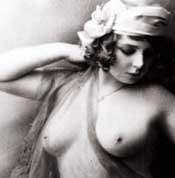
But in the 1850s-1860s cameras percolated out into the world at large and photography became a far less complex and expensive process. However, human nature remained the same - mankind will always appreciate some good lusty photos and therefore even in chaste Victorian Europe there was a huge market clamoring for images of sex. And so the refinement and artistry of the nude academies gave way to straight-up nudity and all the various sex acts/poses of modern pornography we've come to know and love today. Unlike the naughty yet artsy postcards and academies, these photos make no excuses. They are what they are. So while often less skilfully made than the artistic nudes of the era, they have a vitality and honesty all their own and certainly challenge the Victorian establishment's ideal of a proper and chaste society.
Besides, depending on what one is looking for, tasteful nudes can only go so far.
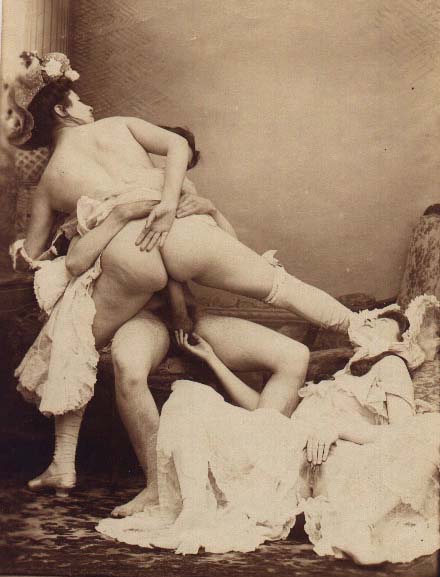
Some things tend to surprise people the first time they see 19th century porn (aside from the fact that it existed at all). Firstly, how little the conventions, poses, and positions have changed after all these years. The photos are usually composed to show penetration as clearly as possible, so you get an inordinate amount of 'reverse cowgirl' positions and all the other ones common to contemporary porn. Orgies and group sex were a beloved subject too, then as now. Also unchanged is the erotic appeal of costuming, whether it's the stockings, bloomers, and blouses, or more specific themes (debauched clergy and nuns were popular once upon a time, giving way to French maids, schoolteachers, the classic dominatrix, and others).
One thing that *has* changed over the years is the modern focus on youth and beauty in naughty photos. Many 19th century photos depicted, how shall we say, "less than lovely" participants who often were quite a bit older than the typical age-range we expect from our models nowadays. I think part this has to do with the type of industry it was in those days - an informal, even illicit one. The standard of beauty (which itself was different back then of course) played a secondary role to the simple and forbidden thrill of viewing these images in which people were having sex. To have a young, woman involved was appreciated but not essential.
.
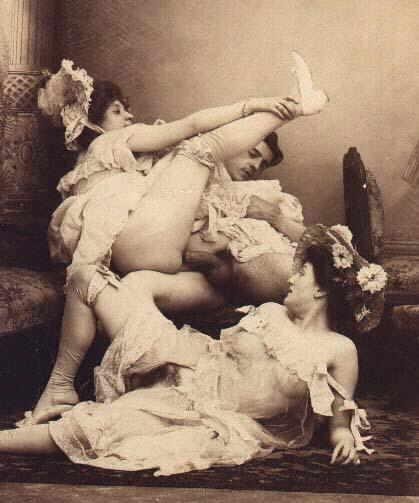
So who were these models that dared flout strict Victorian moral standards?
The vast majority were prostitutes hired from brothels, which helps account for their uninhibited manner whilst naked and cavorting in front of the lens. In fact, houses of ill repute did a brisk business peddling all manner of erotic photographs in addition to selling actual sex. And it's not hard to imagine prostitutes welcoming an afternoon XXX photoshoot as a break from entertaining johns off the street.
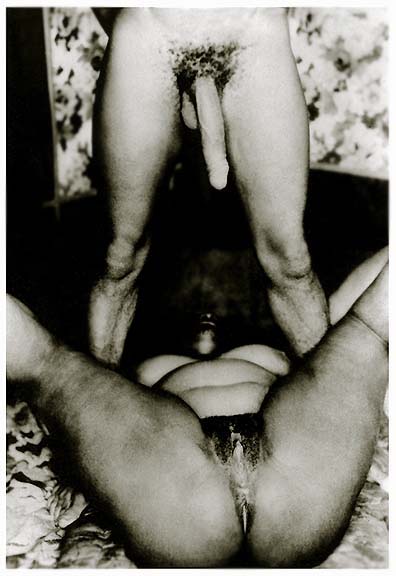
The Ziegfeld Girls
In 1907 Florenz Ziegfeld debuted his Ziegfeld Follies, a highly elaborate Broadway production that was part vaudville, part theatrical variety show, and part chorus girl revue. The show itself was massively popular, had a long run of success (until 1931), and featured many famous performers of the era: W.C. Fields, Ed Wynn, and Will Rogers, to name just a few. But the most enduring image from the show was the inimitable Ziegfeld Girl, dancers in Ziegfeld's famous chorus line.
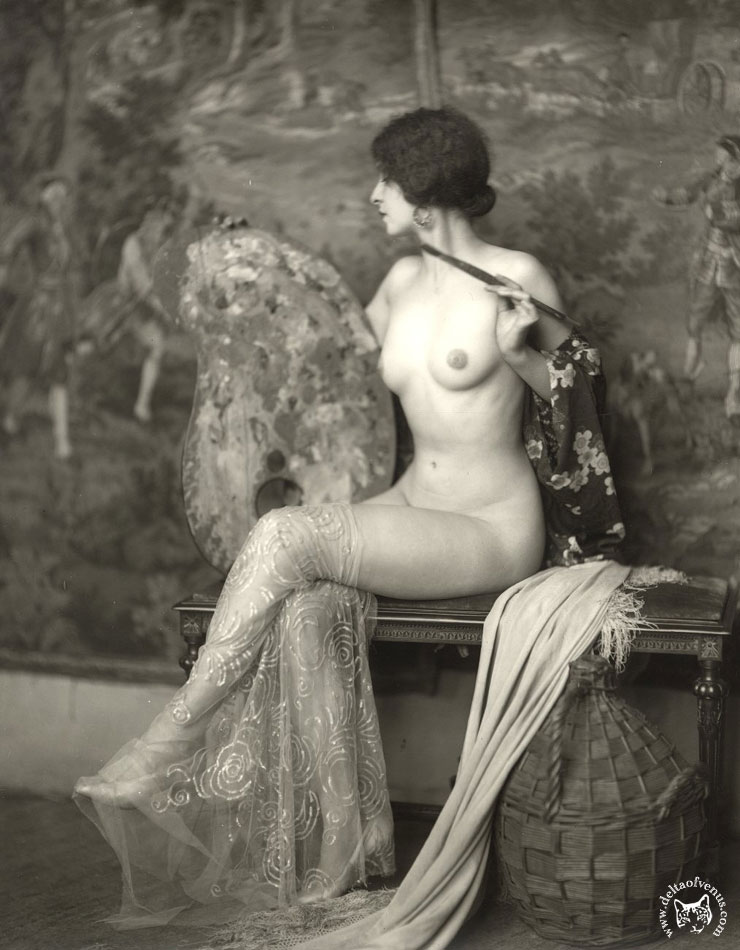
The Ziegfeld Girls were all quite beautiful and generally reflected the standard of female beauty in urban America during the early 1900s. Their costuming was done by the famous designer and illustrator Erté - heavy on the Art Deco look, alternately elaborate and scanty but more frequently both.
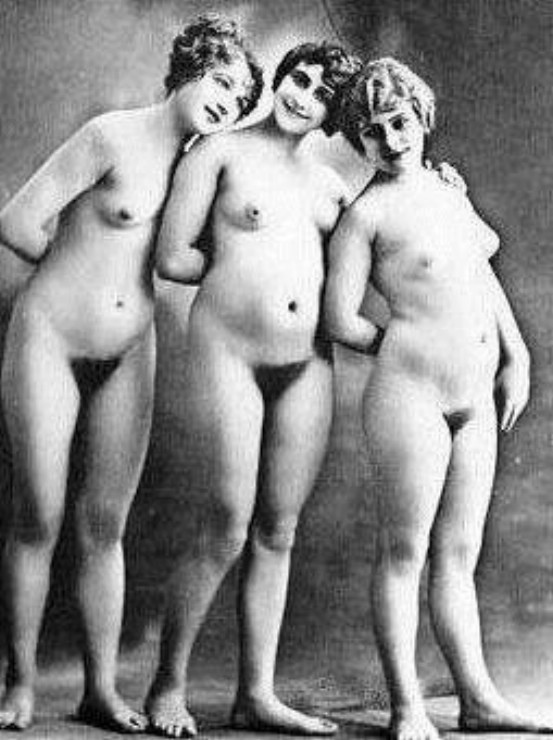
The Satyricon of Petronius Arbiter
Lady Chatterley's Lover by D. H. Lawrence
Ulysses by James Joyce
Delta of Venus by Anaïs Nin.
| I do not mind your quoting my essay, but I want you to make clear
those photos are not part of the essay, but were included by someone
else. The reason for this is that I don' t want anyone to think those
photos are mine (I am a photographer, but that is not the style of
photos I do), . So please just say something to the effect that th e essay is mine, but the photos are not and were added by whomever. Rick Garlikov |